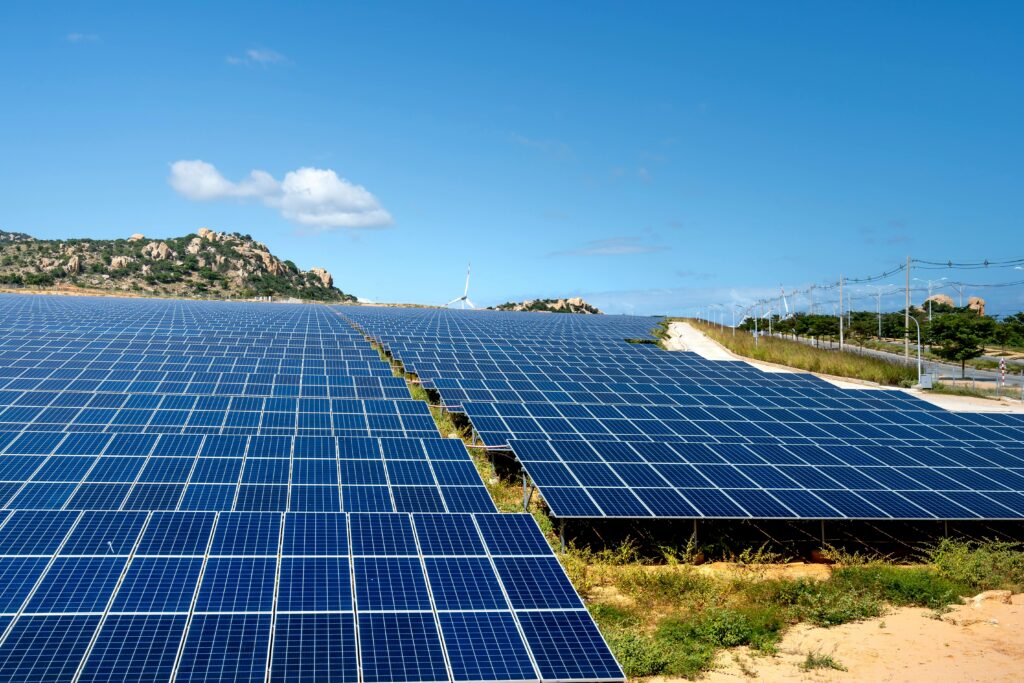Introduction
Green technology, often referred to as clean technology or environmental technology, encompasses a range of products, services, and processes that reduce or eliminate negative environmental impacts. The importance of green technology innovations lies in their potential to address pressing environmental challenges such as climate change, resource depletion, and pollution. As we continue to innovate and adopt these technologies, we pave the way for a more sustainable and resilient future.
Renewable Energy Sources
Solar Power
Advancements in Solar Panels
Solar power remains one of the most promising renewable energy sources. Recent advancements in solar panel technology have significantly increased efficiency and reduced costs. Innovations such as bifacial panels, which capture sunlight from both sides, and perovskite solar cells, known for their high efficiency and low production costs, are revolutionizing the solar industry.
Solar Energy Storage
One of the critical challenges with solar energy has been storage. However, breakthroughs in battery technology, particularly in lithium-ion and solid-state batteries, are making solar energy storage more efficient and affordable. This ensures a steady energy supply even when the sun isn’t shining.

Wind Power
Offshore Wind Farms
Wind power is another crucial component of the renewable energy landscape. Offshore wind farms, which harness stronger and more consistent winds over the ocean, are becoming increasingly popular. Innovations in floating wind turbines are allowing us to tap into wind resources in deeper waters, expanding the potential for wind energy.
Wind Turbine Efficiency
Improvements in wind turbine design, such as larger blades and taller towers, are enhancing the efficiency of wind power generation. Advanced materials and aerodynamics are helping to capture more energy from the wind, making wind power a more viable option for large-scale energy production.
Hydropower
Micro-Hydropower Systems
Hydropower has long been a reliable source of renewable energy. Micro-hydropower systems, which can generate electricity from small streams and rivers, are providing sustainable energy solutions for remote and off-grid communities. These systems are cost-effective and environmentally friendly, making them an attractive option for rural areas.
Tidal Energy
Tidal energy harnesses the power of ocean tides to generate electricity. Innovations in tidal energy technology, such as underwater turbines and tidal barrages, are making this a more practical and efficient source of renewable energy. Tidal energy has the advantage of being highly predictable, providing a reliable energy source.
Sustainable Transportation
Electric Vehicles (EVs)
Battery Technology Improvements
Electric vehicles are at the forefront of sustainable transportation. Recent advancements in battery technology, including higher energy densities and faster charging times, are making EVs more practical and appealing to consumers. Solid-state batteries, in particular, promise to revolutionize the EV industry with their enhanced safety and performance.
EV Charging Infrastructure
The development of EV charging infrastructure is crucial for the widespread adoption of electric vehicles. Fast-charging stations and wireless charging technology are making it easier for EV owners to charge their vehicles conveniently and quickly, further promoting the shift towards electric mobility.
Public Transportation Innovations
Hydrogen Fuel Cells
Public transportation systems are also undergoing significant transformations with the introduction of hydrogen fuel cells. Hydrogen-powered buses and trains offer a clean and efficient alternative to traditional fossil fuel-powered vehicles. These innovations reduce emissions and promote sustainable urban mobility.
Electric Buses and Trains
Electric buses and trains are becoming more common in cities worldwide. These vehicles offer quiet, emission-free transportation options, contributing to improved air quality and reduced noise pollution in urban areas.
Alternative Fuels
Alternative fuels, such as biofuels and synthetic fuels, are playing a vital role in sustainable transportation. These fuels, derived from renewable sources, provide a cleaner alternative to traditional gasoline and diesel, reducing greenhouse gas emissions and dependence on fossil fuels.
Energy-Efficient Buildings
Green Building Materials
The construction industry is embracing green building materials to reduce environmental impact. Materials such as recycled steel, bamboo, and rammed earth are not only sustainable but also durable and energy-efficient. These materials help create buildings that are both environmentally friendly and cost-effective.
Smart Home Technology
Smart home technology is transforming how we use energy in our homes. Devices such as smart thermostats, energy-efficient lighting, and automated systems allow homeowners to monitor and manage their energy consumption more effectively, reducing waste and lowering utility bills.
Net-Zero Energy Buildings
Net-zero energy buildings are designed to produce as much energy as they consume, often through a combination of renewable energy sources and energy-efficient technologies. These buildings represent the future of sustainable architecture, minimizing environmental impact while providing comfortable living and working spaces.
Waste Management Innovations
Recycling Technologies
Innovative recycling technologies are making it easier to recycle a wider range of materials. Advanced sorting systems, chemical recycling processes, and biodegradable plastics are helping to reduce waste and promote a circular economy, where materials are reused and repurposed rather than discarded.
Waste-to-Energy Systems
Waste-to-energy systems convert waste materials into usable energy, such as electricity and heat. Technologies such as anaerobic digestion and gasification are turning organic waste into biogas, while incineration with energy recovery is providing a sustainable way to manage non-recyclable waste.
Biodegradable Materials
Biodegradable materials, made from natural and renewable sources, are reducing the environmental impact of single-use products. Innovations in biodegradable plastics, packaging, and textiles are helping to address the global plastic waste crisis and promote more sustainable consumption.
Water Conservation Technologies
Smart Irrigation Systems
Water conservation is critical in addressing global water scarcity. Smart irrigation systems, which use sensors and weather data to optimize watering schedules, are helping to reduce water waste in agriculture and landscaping. These systems ensure that plants receive the right amount of water at the right time, promoting healthier growth and conserving resources.
Water Purification and Recycling
Advanced water purification and recycling technologies are making it possible to treat and reuse wastewater for various purposes. Membrane filtration, UV disinfection, and biological treatment processes are providing safe and sustainable solutions for water management in both residential and industrial settings.
Desalination Advancements
Desalination, the process of removing salt from seawater, is becoming more efficient and affordable. Innovations in desalination technology, such as reverse osmosis and solar desalination, are providing new sources of fresh water for arid regions and coastal communities, addressing the growing demand for clean water.
Sustainable Agriculture
Vertical Farming
Benefits of Vertical Farming
Vertical farming is revolutionizing agriculture by growing crops in vertically stacked layers, often in controlled indoor environments. This method offers numerous benefits, including reduced land use, shorter supply chains, and year-round crop production. Vertical farms can produce higher yields with less water and fewer pesticides, making them a sustainable solution for urban food production.
Technological Innovations in Vertical Farming
Technological innovations, such as LED lighting, hydroponics, and aeroponics, are enhancing the efficiency and productivity of vertical farming. These technologies allow for precise control of growing conditions, maximizing crop quality and yield while minimizing resource use.
Precision Agriculture
Drones in Agriculture
Precision agriculture uses technology to optimize crop management and improve agricultural productivity. Drones equipped with sensors and cameras are providing farmers with detailed aerial imagery and data on crop health, soil conditions, and pest activity. This information allows for targeted interventions, reducing waste and increasing efficiency.
Soil Health Monitoring
Soil health is critical for sustainable agriculture. Technologies such as soil sensors and data analytics are helping farmers monitor and manage soil conditions more effectively. By understanding soil health, farmers can make informed decisions about irrigation, fertilization, and crop rotation, promoting sustainable farming practices.
Eco-friendly Consumer Products
Biodegradable Packaging
Eco-friendly consumer products are gaining popularity as people become more conscious of their environmental impact. Biodegradable packaging, made from materials such as cornstarch and mushroom-based composites, is providing a sustainable alternative to traditional plastic packaging.
Eco-friendly Electronics
Electronics manufacturers are increasingly focusing on sustainability. Eco-friendly electronics, designed with energy efficiency and recyclability in mind, are reducing the environmental impact of electronic devices. Innovations such as modular designs and recyclable components are making it easier to repair, upgrade, and recycle electronics.
Sustainable Fashion
The fashion industry is also embracing sustainability with eco-friendly materials and ethical production practices. Sustainable fashion brands are using organic cotton, recycled fibers, and low-impact dyes to create stylish and environmentally friendly clothing. By promoting sustainable fashion, we can reduce the environmental footprint of our wardrobe.

Conclusion
Green technology innovations are essential for addressing environmental challenges and promoting a sustainable future. From renewable energy sources and sustainable transportation to energy-efficient buildings and eco-friendly consumer products, these innovations are transforming our world. As we continue to develop and adopt green technologies, we can look forward to a cleaner, healthier, and more sustainable planet.
FAQs
What is green technology?
Green technology, also known as clean technology, refers to products, services, and processes that reduce or eliminate negative environmental impacts, promoting sustainability and conservation of resources.
How does green technology impact the environment?
Green technology helps reduce pollution, conserve natural resources, and mitigate climate change by promoting renewable energy, energy efficiency, and sustainable practices.
What are some examples of green technology?
Examples of green technology include solar panels, wind turbines, electric vehicles, biodegradable packaging, and water purification systems.
Why is renewable energy important?
Renewable energy is important because it provides a sustainable and clean source of power that reduces dependence on fossil fuels, lowers greenhouse gas emissions, and helps combat climate change.
How can individuals contribute to green technology?
Individuals can contribute to green technology by adopting sustainable practices, using renewable energy, supporting eco-friendly products, reducing waste, and advocating for policies that promote environmental conservation.
